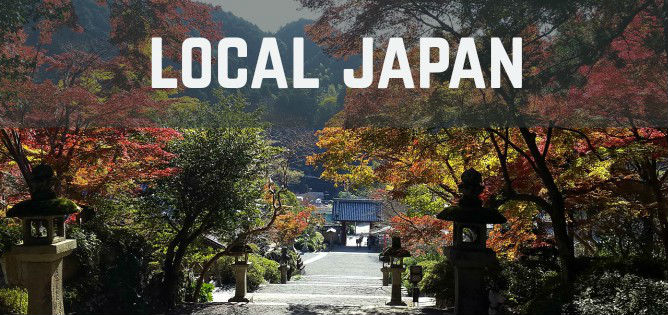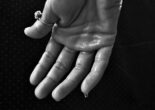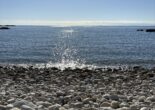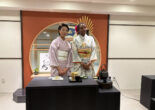
Local Japan: A Great Blend of Rural, Urban, Peace and Convenience in Southern Osaka
Kawachinagano, in the south east of Ōsaka Prefecture, has been my home now for a little over three years. After suffering a couple of redundancies in the UK, I decided it would be a perfect opportunity to pack everything up and move to Japan in order to marry my then girlfriend who is a Kawachinagano native.
It wasn’t an adventure into the complete unknown as I had come over to visit a few times on vacation while I was still living in England. We had been planning my move for a little while so we had already sourced a nice apartment in a quiet spot on the edge of town, but still within walking distance of the station.
One thing I had not really considered, especially given the relative suddenness of my move, was what I would do for work. All I knew was that I was not confident or comfortable being an English teacher. Luckily for me, Kawachinagano was the perfect location to indulge a few passions I hadn’t had much chance to in the past; history and writing.
As a budding history writer, I could hardly ask for a better place to be based. With the sacred Buddhist mountain of Kōyasan to the south; and Kashihara and Asuka, some of the earliest capital cities, to the east, I am spoiled for choice when it comes to writing subjects. Not only that, but Namba, in central Ōsaka, is only 30 minutes by train making travel further afield relatively convenient and inexpensive. However, sitting between two popular spots like Namba and Kōyasan, it means Kawachinagano is almost entirely ignored by travelers.
All of that is really is just the icing on the cake as far as I am concerned. Despite being home to more than 100,000 people, Kawachinagano never feels busy. Tucked into a corner of Ōsaka Prefecture, and bordering Nara and Wakayama Prefectures, much of the city is covered in forested hills and the further south you go, the more sparsely populated it gets. This makes it a great place to explore on foot, a fact that helped me very quickly shed the pounds I gained during my sedentary office days.
Most days, I try to get up around 4.30 or 5am so that I can get in a couple of hours of walking before I settle down in front of the computer. For these early morning strolls, I prefer to head to one of the parks dotted around town. My favorite is Teragaike, a small lake towards the north of town. It is quite popular even at that time of day,with dog walkers trekking around the roughly 2km perimeter and elderly folk doing their exercises in the small Plaza of the Four Seasons near the southern entrance.
From time to time, I’ll leave a little later and take the bus further up into the hills and then walk back into town. The road is a relatively busy route into central Nara Prefecture but the scenery along the way is quite lovely. On one side, the ground drops away to reveal clusters of small farms and rice fields before rising again into another heavily wooded hillside.
Along the way, you pass through a couple of small communities. One of these, the village of Kobuka, is where my wife’s parents live. We visit them often for dinner and they have been instrumental in helping me settle in Japan. We have a good laugh despite the language barrier (I’m embarrassed to say that even after 3 years, my Japanese is still very poor) and they have taught me a great deal about local traditions and cooking.
My father-in-law also has his own farm among the nearby valleys so we never leave their house without several bags full of fresh vegetables. I would love to have a small allotment of my own so that I can share some of the growing duties. There are quite a few seemingly abandoned and overgrown plots near my house but it can be all but impossible sometimes, even for the city office, to trace potential owners and find out if they are available.
Beyond the outlying villages like Kobuka and Amami, the hills rise into larger mountains. Many of these are very popular places to go hiking and form part of a particular hiking route called the Diamond Trail that runs down the eastern border of Ōsaka Prefecture to Kawachinagano, and then turns west towards the sea.
Two of Kawachinagano’s mountains in particular are very popular with both local people and tourists alike. The smaller of these, Mount Iwawaki, is most easily reached by hiking from the nearby Takihata Dam. The mountain top is very wide and flat and changes color between green and gold during the year due to a large field of tall grass. There is also a very nice cafe called Mori-no-Cafe, meaning ‘Cafe in the Woods’, that only opens a few times a year, particularly in Autumn.
The taller of the two mountains, Mount Kongō, is in fact the highest peak in Ōsaka Prefecture. There are a couple of good hiking trails up the mountain making for a strenuous, but not too difficult climb that even kids can manage. For those who can’t, or simply don’t have the time, there is a cable car that can take you most of the way.
As you get close to the top, there is a little observatory, and an activity area for children. Beyond this is a pretty shrine of pale wood whose approach is marked with stone pillars. These pillars are similar to those you see outside of most shrines, but unusually, before you are eligible to donate one, I believe you have to have climbed the mountain several thousand times. So far, I have only been the once, during winter when there was quite heavy snowfall, which made for a great adventure.
On a clear day, from the top of Kongo-san, you can see virtually the whole of Ōsaka and as far as Kobe in neighboring Hyōgo Prefecture and the east coast of the island of Shikoku. You can even pick out certain landmarks such as the massive Abeno Harukas building or the unusual white tower of the Church of Perfect Liberty in Tondabayashi.
Kawachinagano also boasts some beautiful temples dating back over a thousand years and these are some of my favorite places to visit. The city was quite an important location during the Nanboku-cho Period. A time of civil war in the second half of the 14th century when there were two rival lines of Emperors battling for control of Japan. Amanosan Kongo-ji temple even served as a palace for three generations of Southern Court Emperors, before they were eventually defeated by the Northern Court.
One of Japan’s greatest samurai heroes, Kusunoki Masashige, was very active in Kawachinagano. In his youth, he studied at the beautiful temple of Kanshin-ji and built a castle on the slopes of Kongo-san as well as on a hill called Eboshigata, which is virtually in my back garden. Chihaya Castle, on Kongo-san is even ranked among the top 100 Japanese castles, although there is nothing much to see these days save for an eerily quiet shrine.
He is still relatively unknown outside of Japan, but of all the famous and well known samurai throughout Japan’s colorful history, his is the only statue to earn a place outside the Imperial Palace in Tokyo. He is seen as the ultimate paragon of duty and service to the Emperor, having sacrificed his life leading a charge of 2,000 men against tens of thousands of enemies because that was the wish of his lord.
My current focus for research is a short stretch of an ancient road called the Kōya Kaido. This was a famous pilgrimage route that ran all the way from Kyoto, down through Ōsaka and ending at the Danjo Garan on Kōyasan. Some parts of the route through Kawachinagano are quite well sign-posted, and even have English information, but the further south you go, the more difficult it is to follow. I’d love one day to be able to encourage people who are making their way to Kōyasan to perhaps stop off in Kawachinagano and experience a small part of a 1000 year old tradition. Maybe one day, I’ll even be able to write a book about it.
In the meantime, Kawachinagano offers me a perfect blend of beauty, scenery, history and convenience that I think I would be hard pressed to find in many other parts of Japan.
Related Articles
Warning: Undefined array key "sfsi_threadsIcon_order" in /home/veremosglobal/tokyoroomfinder.com/public_html/blog/wp-content/plugins/ultimate-social-media-icons/libs/controllers/sfsi_frontpopUp.php on line 165
Warning: Undefined array key "sfsi_blueskyIcon_order" in /home/veremosglobal/tokyoroomfinder.com/public_html/blog/wp-content/plugins/ultimate-social-media-icons/libs/controllers/sfsi_frontpopUp.php on line 170
Warning: Undefined array key "sfsi_bluesky_display" in /home/veremosglobal/tokyoroomfinder.com/public_html/blog/wp-content/plugins/ultimate-social-media-icons/libs/controllers/sfsi_frontpopUp.php on line 266



